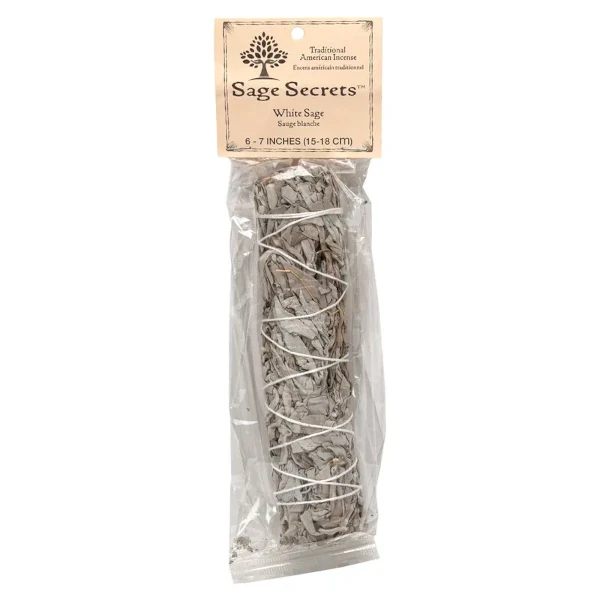Introduction
In April 2022, my world was turned upside down when I received a life-altering diagnosis: stage 4 colorectal cancer. Fear and uncertainty gripped me, but I refused to give up hope.
I knew deep down there had to be more to healing than just conventional medicine. This ignited a quest to explore the power of holistic practices, and so began my transformative healing journey.
It wasn’t always easy. There were days filled with doubt and moments of physical discomfort. But alongside the challenges, I discovered a profound sense of inner strength and a newfound appreciation for the mind-body-spirit connection.
A year later, in August 2023, I received the news I’d longed to hear – I was cancer-free. This experience wasn’t just about overcoming cancer; it was about rediscovering myself and the incredible potential for healing that resides within us all.
Welcome to your comprehensive guide to healing! Let’s now delve into the profound world of healing, offering a wealth of information and resources to empower you on your journey to wholeness.
Disclosure: This post contains affiliate links. If you make a purchase through these links, I may earn a commission at no extra cost to you.
What is Healing?
Healing, as I came to understand it through my journey, extends far beyond simply addressing physical ailments. It’s a multi-faceted experience that encompasses your entire being:
- Physical Healing: Restoring the body to a state of optimal health and function through various practices like healthy eating, exercise, and adequate sleep.
- Emotional Healing: Addressing and resolving past traumas, emotional pain, and negative thought patterns, allowing you to release emotional burdens and cultivate inner peace.
- Mental Healing: Sharpening focus, improving memory, and fostering a positive and resilient mindset to navigate life’s challenges with greater strength.
- Spiritual Healing: Connecting with a sense of purpose, deeper meaning, and a connection to something greater than oneself.
(We’ll delve deeper into each aspect of healing further down this article.)

Why is Healing Important?
The transformative power of healing offers a multitude of benefits that enrich your life in profound ways:
- Increased Happiness: Healing allows you to release emotional burdens and cultivate inner peace, leading to greater happiness and overall well-being.
- Enhanced Resilience: Developed through healing practices, resilience equips you to navigate life’s challenges with greater strength and flexibility.
- Deeper Self-Awareness: The healing journey leads to a deeper understanding of your thoughts, emotions, and needs, empowering you to make choices aligned with your values and desires.
- Stronger Connection to Yourself: Healing fosters a sense of self-acceptance and love, fostering a deeper connection to your authentic self.
By embarking on a healing journey, you embark on a path of self-discovery and empowerment. You’ll unlock a greater sense of well-being, navigate life’s challenges with greater ease, and experience a newfound connection to your authentic self.
This is just the beginning of your healing journey. In the following sections, we’ll explore various healing modalities, from traditional medicine to alternative practices, to empower you to create a personalized path to your own holistic well-being.
Ready to begin? Let’s dive deeper!

Understanding Your Need to Heal
Healing isn’t a one-size-fits-all process. It’s a personalized journey tailored to your unique needs and circumstances. But how do you know when it’s time to embark on this transformative path? Here, we’ll explore the signs and symptoms that might indicate a need for healing in each dimension of your being: physical, emotional, mental, and spiritual.
A. Signs & Symptoms of Dis-ease:
1. Physical Dimension:
- Frequent illness or fatigue: Constantly catching colds, experiencing inexplicable aches and pains, or feeling run down despite adequate sleep can be signs of underlying imbalances.
- Digestive issues: Chronic digestive problems like constipation, diarrhea, or bloating can indicate stress or a need to address dietary imbalances.
- Changes in sleep patterns: Difficulty falling asleep, restless sleep, or waking up unrefreshed can point towards physical or emotional imbalances.
2. Emotional Dimension:
- Feeling overwhelmed or stressed: Constant anxiety, feeling on edge, or struggling to cope with daily life can be signs of emotional distress.
- Irritability or anger: Increased outbursts of anger or feeling easily frustrated can indicate underlying emotional pain.
- Detachment or emotional numbness: Feeling disconnected from your emotions or withdrawing from social interaction can be signs of emotional suppression.
3. Mental Dimension:
- Brain fog or difficulty concentrating: Feeling forgetful, having trouble focusing, or experiencing mental fatigue can be signs of stress or imbalanced brain chemistry.
- Negative thought patterns: Ruminating thoughts, constant self-criticism, or a pessimistic outlook can hinder mental well-being.
- Loss of motivation or feelings of hopelessness: Feeling uninspired or lacking the drive to pursue goals can indicate a need for mental and emotional rejuvenation.
4. Spiritual Dimension:
- Loss of meaning or purpose: Feeling disconnected from your values or a sense of emptiness can indicate a need for spiritual exploration.
- Lack of connection to something larger than yourself: This could manifest as a yearning for a deeper connection to nature, humanity, or a higher power.
- Cynicism or a loss of faith: Feeling disillusioned or questioning your beliefs can be a sign of a need for spiritual renewal.

B. Sources of Dis-ease:
These signs and symptoms often stem from various sources of pain and dis-ease in our lives, such as:
- Stress: Chronic stress can wreak havoc on all aspects of our well-being, contributing to physical ailments, emotional distress, and hindering mental clarity.
- Trauma: Unhealed emotional wounds from past experiences can manifest as physical symptoms, negative thought patterns, and a sense of disconnection from yourself and the world.
- Negative Relationships: Being surrounded by toxic or unsupportive individuals can drain your energy and hinder your emotional well-being.
- Negative Self-talk: The constant inner critic can lead to low self-esteem, anxiety, and hinder your ability to move forward in life.
C. Identifying Your Needs:
Now that you have a better understanding of the signs and symptoms of dis-ease, it’s time to explore areas where healing might be needed. Here are some prompts for self-assessment:
- In which areas of my life do I feel most drained or depleted (physical, emotional, mental, or spiritual)?
- What negative thought patterns or self-beliefs hold me back?
- Are there past experiences that continue to cause me emotional pain?
- Do I feel a sense of purpose and direction in life?
- Am I surrounded by supportive and uplifting relationships?
By reflecting on these questions and being honest with yourself, you can gain valuable insights into the areas where healing can bring about the most significant transformation in your life.
Remember, this is just the first step. In the next section, we’ll explore various healing modalities to empower you to embark on your personalized path to wholeness!

Exploring Different Paths to Healing
As we embark on our healing journeys, it’s important to remember that there’s no one-size-fits-all approach. Holistic healing recognizes the interconnectedness of mind, body, and spirit, and emphasizes addressing all aspects for optimal well-being. The beauty lies in exploring a variety of healing modalities to create a personalized plan that resonates with your unique needs and preferences.
A. Types of Healing:
The world of healing offers a diverse range of approaches to support your journey towards wholeness. Let’s explore some of the most common categories:
1. Physical Healing:
- Traditional Medicine: Western medicine plays a crucial role in diagnosing and treating various health conditions. It encompasses doctors, specialists, and various medical treatments.
- Alternative Medicine: This broad category includes various practices that complement traditional medicine, such as:
- Acupuncture: A traditional Chinese medicine practice that involves inserting thin needles into specific points on the body to promote healing and balance.
- Chiropractic: Focuses on the musculoskeletal system and spinal adjustments to improve function and address pain.
- Nutrition and Diet: Eating a balanced and nutritious diet is fundamental for physical health. Explore dietary approaches like whole-food diets, mindful eating, or consulting a registered dietitian.
2. Emotional Healing:
- Therapy and Counseling: Talking to a therapist or counselor provides a safe space to explore and address emotional challenges, past traumas, and develop coping mechanisms.
- Emotional Freedom Techniques (EFT): A powerful technique that combines tapping on acupressure points with focusing on emotions to help release emotional distress.
- Journaling and Expressive Arts: Expressing yourself creatively through journaling, art therapy, or music therapy can be a powerful tool for emotional exploration and releasing pent-up emotions.
3. Holistic Healing:
Holistic healing encompasses various practices that promote mind-body-spirit connection and overall well-being. Here are some core principles:
- Focus on the Whole Person: Addresses physical, emotional, mental, and spiritual aspects of health.
- Prevention and Self-Care: Empowers you to take an active role in your well-being through healthy lifestyle choices.
- Mind-Body Connection: Recognizes the influence of thoughts and emotions on physical health.
Some popular holistic practices include:

Meditation and Mindfulness: Techniques to cultivate present-moment awareness and focus, leading to reduced stress and increased emotional well-being. You can learn more about Meditation and Mindfulness in my blog post: The Ultimate Guide to Meditation: Discover Inner Peace & Well-Being.

Aromatherapy: Utilizes essential oils extracted from plants to promote relaxation, improve mood, and even enhance sleep. In my blog post, Beat Insomnia Naturally with Essential Oils & Meditation, I explore how to combine essential oils and meditation to create a calming bedtime routine.
Dietary and Lifestyle Changes: Holistic healing emphasizes the importance of a balanced diet, regular exercise, and adequate sleep for optimal health.
4. Spiritual Healing:
Spiritual healing focuses on connecting with a sense of purpose, deeper meaning, and a connection to something greater than oneself. Practices like meditation, mindfulness, and some forms of energy healing (e.g., Reiki, Pranic Healing) can support spiritual growth.
5. Energy Healing:
This practice works with the body’s subtle energy field, believed to influence physical and emotional well-being. It aims to promote relaxation, reduce stress, and support healing.
Here are some specific modalities within energy healing:
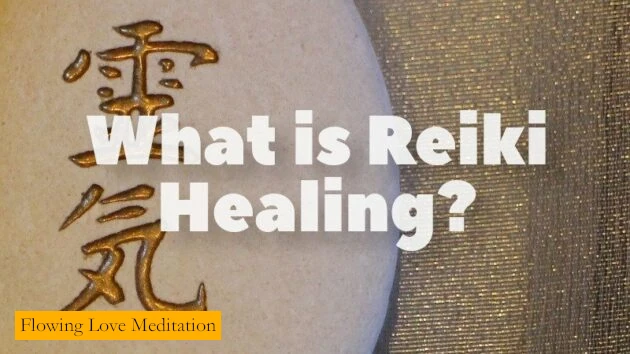
Reiki: A Japanese technique for stress reduction and promoting healing by channeling energy through the practitioner’s hands to the recipient. You can learn more about Reiki and its benefits in my blog post: What is Reiki Healing?
6. Crystal Healing:
This practice utilizes gemstones and crystals believed to possess specific energies that interact with the body’s energy field to create balance and harmony, promoting physical, emotional, and spiritual well-being.
B. Creating a Personalized Plan:
With this diverse array of healing modalities at your disposal, the next step is crafting a personalized plan. Here’s how you can get started:
- Identify Your Needs: Reflect on the areas in your life that require healing (physical, emotional, mental, or spiritual).
- Explore Your Options: Research and learn about different healing modalities that resonate with you.
- Consider Your Preferences: Choose practices that align with your personality, lifestyle, and budget.
- Start Small: Don’t overwhelm yourself! Begin with a few practices you can integrate into your daily routine.
- Listen to Your Body: Pay attention to how you feel both during and after trying a new practice. Adjust your plan accordingly.
Remember, healing is a journey, not a destination. Be patient, explore different paths, and embrace the transformative power of holistic healing in your life.
C. Additional Resources:

To delve deeper into the world of holistic healing and its various practices, refer to my blog post: Holistic Healing: A Comprehensive Guide to Health and Well-Being.
The Healing Journey: A Roadmap with Stages and Tools
The healing journey is a transformative process, often with unexpected twists and turns. It’s important to understand that there’s no set timeline or rigid path. However, many people experience emotional stages along the way, first identified by Elisabeth Kübler-Ross in her work on death and dying.
While these stages are typically associated with grief, they can also apply to any significant healing journey, including overcoming illness, trauma, or emotional pain. Here’s a breakdown of these stages, along with tools to navigate them with compassion:
A. Stages of Healing:
- Denial: This initial stage is a natural defense mechanism. You might refuse to believe what’s happening, minimize its impact, or isolate yourself from others. Example: After a diagnosis of a chronic illness, someone might say, “There must be some mistake with the test results. I can’t be sick.”
- Anger: As denial fades, anger can surface. You might feel frustrated, resentful, and lash out at yourself, others, or even the universe. Example: Someone healing from a betrayal might constantly replay the event in their mind, feeling rage towards the person who hurt them.
- Bargaining: In this stage, you might attempt to negotiate your way out of the situation. “If I do X, then Y won’t happen,” are common bargaining thoughts. Example: Someone struggling with addiction might promise themself, “If I can just get through this week without using, I’ll never do it again.”
- Depression: This stage is characterized by sadness, despair, and a sense of hopelessness. You might withdraw from social interaction and lose interest in activities you once enjoyed. Example: Someone dealing with the loss of a loved one might experience deep sadness, social withdrawal, and difficulty finding joy in everyday life.
- Acceptance: This doesn’t mean resignation or giving up. It’s about acknowledging the reality of the situation and finding a way to move forward with grace and acceptance. Example: Someone with a chronic illness might reach a point of accepting their diagnosis and focusing on managing their condition and living a fulfilling life.
B. Navigating Each Stage with Self-Compassion:
Remember, these stages are not linear. You might move back and forth between them, and the experience can be unique for everyone. The key is to approach yourself with kindness and understanding throughout the process. Here are some tips:
C. Emotional Healing:
- Self-forgiveness: Holding onto guilt, shame, and blame can hinder healing. Forgiveness, particularly self-forgiveness, is a powerful tool for releasing these burdens and achieving emotional well-being. It’s not about condoning your actions or erasing the past, but about releasing the negative emotions holding you back. For steps on self-forgiveness, see ‘Forgiveness Practices’ below.
- Forgiveness as a Tool for Healing: Just as self-forgiveness is crucial, forgiving others who may have caused you pain is also essential for emotional well-being. Resentment and unforgiveness can act like anchors, keeping you tethered to the past. Forgiveness allows you to release these burdens and achieve inner peace. The concept of forgiveness can unfold in stages similar to the healing journey itself. In the ‘Forgiveness Practices’ below, I offer practices like releasing resentment and sending love and light to support you in forgiving others.
Stages of Forgiveness: It’s important to acknowledge that forgiveness can be a non-linear process, mirroring the stages of healing. While forgiveness might be the ultimate goal, these stages provide a framework for understanding where you might be on your journey:
1. Denial: Refusing to acknowledge the hurt or minimizing its impact.
2. Anger: Feeling resentful and wanting to lash out at the person who hurt you.
3. Bargaining: Trying to make amends or seeking some form of payback.
4. Depression: Feeling sadness, despair, and hopelessness about the situation.
5. Acceptance: Acknowledging the situation and choosing to let go of the negative emotions.
6. Forgiveness: Releasing the resentment and choosing to move forward with peace.
As you can see, it is almost similar to the stages of healing. The only difference is the additional step of Forgiveness. And that is critical to finding inner peace.
D. Forgiveness Practices:
My blog posts explore various forgiveness practices to support your journey at different stages:
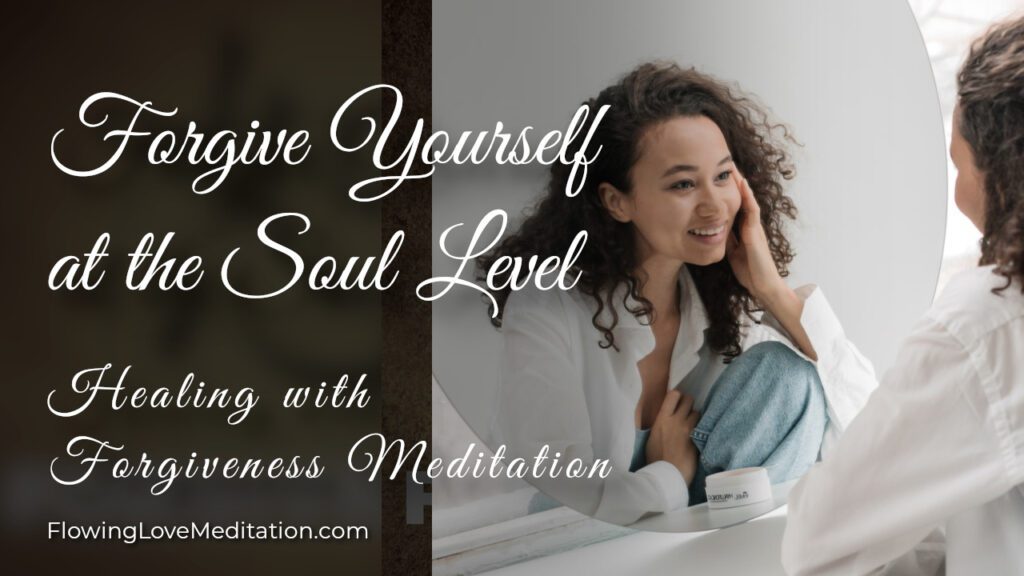
Forgive Yourself at the Soul Level: This post explores a powerful technique for self-forgiveness, helping you release self-criticism and guilt. By forgiving yourself at the soul level, you can release burdens and create space for self-love and acceptance.
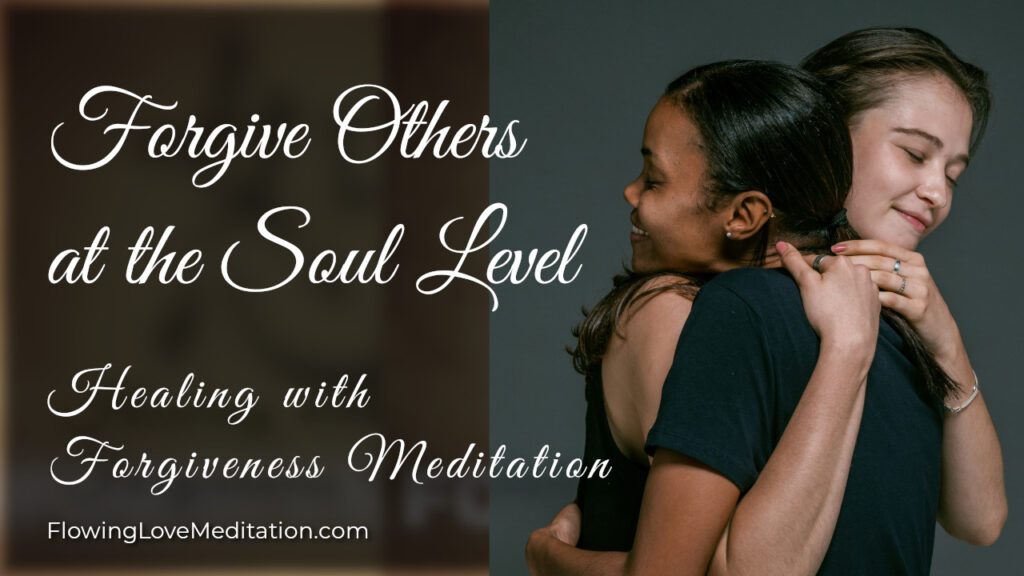
Forgive Others at the Soul Level: This post dives into a method for forgiving others who may have caused you pain. By forgiving others at the soul level, you can let go of the emotional baggage and move forward with inner peace.
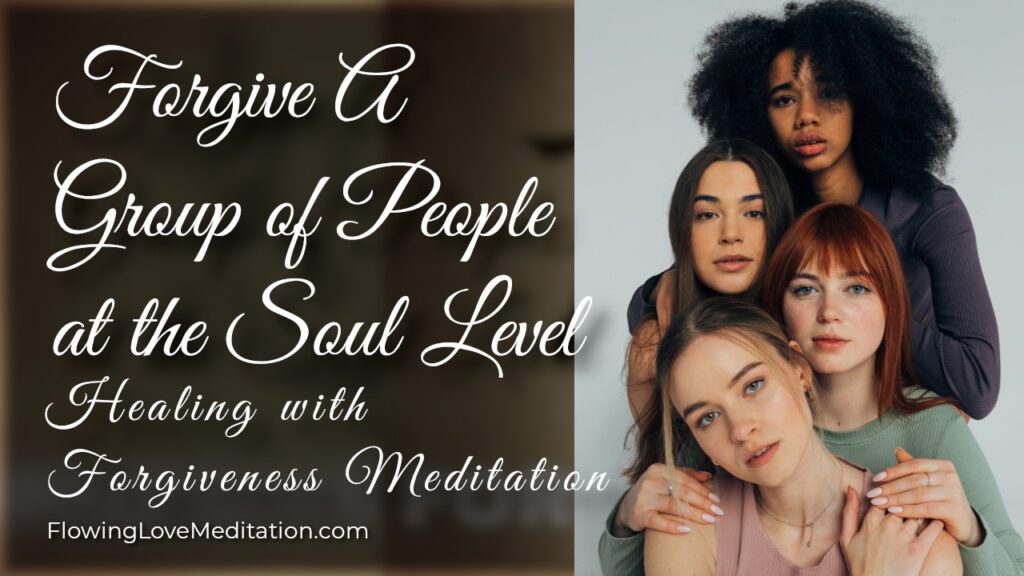
Forgive a Group of People at the Soul Level: This post explores practices like group forgiveness meditation to help you release collective burdens and move forward with greater peace.

Forgive People from Your Past Lives at the Soul Level: This post delves into the concept of karma and explores practices for releasing past-life burdens and achieving soul healing.
E. Self-Care Throughout the Journey:
Self-care is an essential pillar of healing. It’s about nurturing your physical, emotional, and mental well-being to create a foundation for growth and transformation. Here are some practices to integrate into your routine:
- Healthy Eating: Nourish your body with whole, nutritious foods that provide the energy and essential vitamins and minerals needed for healing.
- Getting Enough Sleep: Prioritize quality sleep for optimal physical and mental restoration. Aim for 7-8 hours of sleep per night.
- Spending Time in Nature: Immerse yourself in the beauty and serenity of nature. Go for walks in the park, spend time by a river, or simply sit under a tree and breathe in the fresh air.
- Setting Boundaries: Learn to say no to protect your time and energy. Setting boundaries with others allows you to prioritize your well-being and create space for healing.
F. Sample Self-Care Routine:
Here’s a basic self-care routine template to get you started:
- Morning: Start your day with a glass of water, followed by a healthy breakfast and some gentle stretches or yoga.
- Midday: Take a break from work or other responsibilities to enjoy a mindful lunch, go for a walk, or practice a short meditation.
- Evening: Disconnect from technology at least an hour before bed. Take a relaxing bath, read a book, or spend time with loved ones.
Remember, this is just a sample. Experiment and create a self-care routine that feels nourishing and supportive for you.
The healing journey is a lifelong process. By understanding the stages, practicing self-compassion, and incorporating self-care practices, you can navigate this transformative journey with greater ease and emerge stronger, more resilient, and filled with a renewed sense of wholeness.
Healing the Mind, Body, and Spirit
We are not simply physical beings; we are also emotional, mental, and spiritual entities. This interconnectedness is known as the mind-body connection, and it profoundly influences our overall well-being.
A. Mind-Body Connection:
The mind-body connection acknowledges the two-way street between our thoughts, emotions, and physical health. What happens in our minds can manifest physically, and our physical state can significantly impact our mood and emotions. For example, chronic stress can trigger headaches, muscle tension, and digestive issues. Conversely, positive emotions like gratitude and joy can boost the immune system and promote feelings of well-being.
B. Understanding the Mind-Body Connection:
Here are some everyday examples of how the mind-body connection works:
- Stress: Feeling overwhelmed by work or personal issues can lead to headaches, stomachaches, or difficulty sleeping.
- Anxiety: Anticipatory worry can manifest as racing heartbeats, shortness of breath, and restlessness.
- Positive Emotions: Laughter, joy, and gratitude can lower blood pressure, reduce stress hormones, and promote feelings of calm and well-being.
- The Placebo Effect: The power of belief can have a surprising impact on physical health. Studies have shown that sugar pills can alleviate pain when patients believe they are taking medication.
C. Practices to Strengthen the Mind-Body Connection:
By nurturing the mind-body connection, we can create a foundation for optimal health and well-being. Here are some practices you can integrate into your daily routine:
- Yoga: This mind-body practice combines physical postures (asanas) with breathing exercises (pranayama) and meditation to promote relaxation, stress reduction, and improved physical health.
- Meditation: Meditation cultivates present-moment awareness and helps quiet the mind. Regular meditation practice can reduce stress, improve focus, and enhance emotional well-being.
- Mindfulness Exercises: Mindfulness practices involve paying attention to the present moment without judgment. Simple exercises like mindful breathing or mindful walking can help manage stress, improve focus, and increase self-awareness.

Mindfulness Meditation reaps the benefits of both meditation and mindfulness. You can learn more in my blog post: The Benefits of Mindfulness Meditation for Holistic Health.
D. Emotional Well-being in Holistic Healing:
Our emotional well-being is a crucial aspect of holistic health. Holistic practices address emotions by providing tools for managing stress, promoting self-compassion, and fostering positive relationships.
- Stress Management: Techniques like meditation, yoga, and spending time in nature can effectively reduce stress and promote feelings of calm and peace.
- Self-Compassion: Holistic practices encourage self-acceptance and kindness towards oneself, fostering a sense of emotional well-being.
- Positive Relationships: Nurturing healthy relationships with loved ones provides emotional support and a sense of belonging, contributing to overall well-being.
E. Holistic Healing Approaches:
Holistic healing approaches address the interconnectedness of mind, body, and spirit. These approaches emphasize preventive care, self-care practices, and creating a lifestyle that supports overall well-being.
F. Integrating Physical, Emotional, and Spiritual Healing:
Different healing modalities can work together to create a more comprehensive approach to well-being. For example, combining meditation or yoga with healthy eating habits can be particularly effective in managing stress and promoting overall health.
G. Benefits of a Holistic Approach:
A holistic approach to healing offers a multitude of long-term benefits:
- Increased Overall Well-being: By addressing physical, emotional, and spiritual well-being, a holistic approach creates a foundation for a healthier and more fulfilling life.
- Reduced Stress: Holistic practices like meditation, yoga, and spending time in nature can effectively reduce stress and promote feelings of calm and peace. You can learn more on how to de-stress with meditation: De-Stress with Beginner’s Guide to Mindfulness Meditation.
- Greater Self-Awareness: Through various healing modalities, you can gain a deeper understanding of your thoughts, emotions, and needs, empowering you to make choices that support your well-being.
- Sense of Wholeness: A holistic approach fosters a sense of wholeness and connection to yourself and the world around you.
H. Self-Healing Techniques:
The power to heal lies within us all. Here are some self-healing techniques you can practice independently:
- Journaling: Writing down your thoughts and feelings can be a powerful tool for self-exploration and emotional release.
- Affirmations: Repeating positive statements about yourself can help boost self-esteem and create lasting change.
- Breathwork: Focusing on your breath can calm the nervous system and promote relaxation.
By incorporating these practices into your daily life, you can embark on a journey of holistic healing, nurturing your mind, body, and spirit for a life filled with greater well-being and a sense of wholeness.

I. Daily Practices for Self-Healing:
Making self-healing practices a regular part of your routine is key to sustained progress. Here are some ideas for incorporating these practices into your daily life:
- Start Small: Begin with short, manageable practices like 5-minute meditations or 10 minutes of journaling. Consistency is more important than duration.
- Find a Time that Works for You: Schedule your self-healing practices at a time when you’re less likely to be interrupted. Whether it’s first thing in the morning or before bed, find a time that fits your routine.
- Create a Ritual: Develop a dedicated space or ritual for your self-healing practices. This could involve lighting a candle, putting on calming music, or simply taking a few deep breaths to center yourself.
- Track Your Progress: Keep a journal to track your progress and observations. This can help you stay motivated and identify areas where you’re experiencing positive changes.

You can learn more about how space clearing can help you create your sacred space. Also, information about why space clearing is important, the steps to do space clearing and more! Ultimate Space Clearing Guide for a Positive, Vibrant Home
J. Building a Healing Routine:
There’s no one-size-fits-all approach to creating a healing routine. The key is to personalize your practices to your unique needs and preferences. Here are some steps to consider:
- Identify Your Needs: Reflect on the areas of your life that need the most attention. Are you feeling stressed? Do you struggle with negative self-talk? Identifying your needs will help you choose practices that offer the most benefit.
- Explore Different Practices: Experiment with various self-healing modalities like meditation, yoga, breathwork, or spending time in nature. Find what resonates most with you.
- Seek Guidance: Consider consulting a holistic practitioner, therapist, or yoga instructor for personalized guidance and support in creating your healing routine.
- Be Patient and Kind to Yourself: Healing is a journey, not a destination. There will be ups and downs along the way. Embrace the process with patience and self-compassion.
By incorporating self-healing practices and building a personalized healing routine, you can empower yourself to create a life filled with greater well-being, peace, and a sense of wholeness. Remember, you have the inherent capacity to heal and thrive. Trust your inner wisdom, embrace the journey, and celebrate every step you take towards a healthier and more fulfilling life.
Healing Journeys and Testimonials
The path to healing is rarely linear. We may encounter setbacks and challenges along the way.
However, witnessing the triumphs of others on their healing journeys can be a powerful source of inspiration and hope.
In this section, we’ll explore the importance of finding encouragement through shared experiences.
A. Timotheus’ Holistic Triumph Over Colorectal Cancer
Facing a diagnosis of colorectal cancer was a turning point in my life. My healing journey involved embracing a holistic approach that included practices like meditation, energy healing, and dietary changes. These practices, alongside traditional medicine, played a significant role in supporting my well-being and recovery.

Read my inspiring story of healing here: Holistic Triumph Over Colorectal Cancer: My Healing Journey.
Practical Tools and Resources to Support Your Healing
This section offers a toolbox of resources to empower you on your healing journey. Here you’ll find guided meditations, journaling prompts, affirmations, breathing exercises, and more to support your physical, emotional, and spiritual well-being.
A. Guided Meditations:
- Stress Release Meditation: This meditation helps calm the mind and release tension, promoting feelings of peace and relaxation.
- Emotional Processing Meditation: This meditation guides you through acknowledging and releasing emotions in a healthy way.
- Inner Self Connection Meditation: This meditation helps you connect with your inner wisdom and intuition, fostering self-awareness and a deeper sense of self.
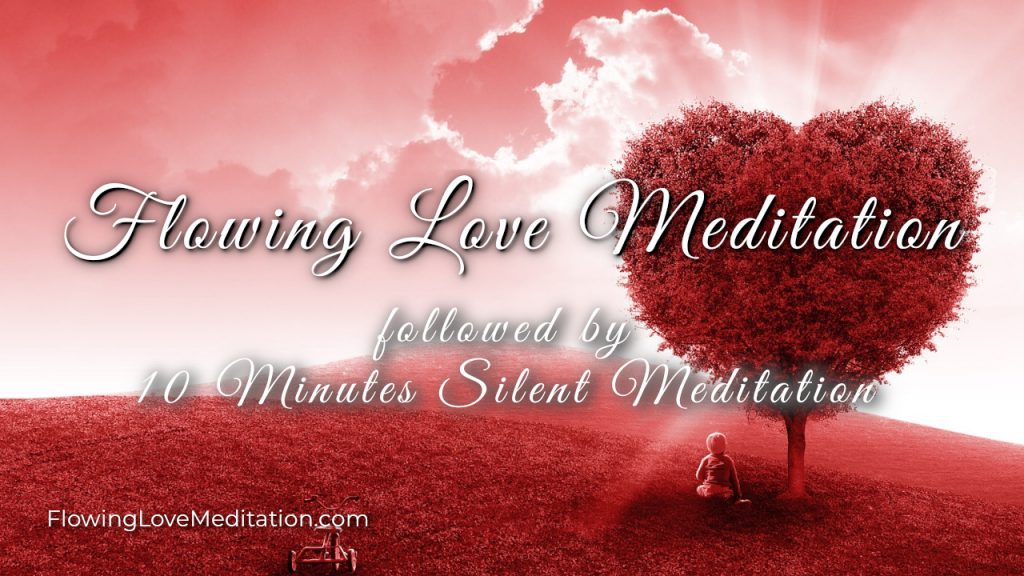
Here is the popular Guided Meditation on my website and YouTube Channel: Flowing Love Meditation. You can learn more as well as practice it on my blog post: Flowing Love Meditation with 10 Minutes Silent Meditation.

You can also experience more Guided Meditations on my meditation main page: The Ultimate Guide to Meditation: Discover Inner Peace & Well-Being.
B. Journaling Prompts:
- Self-Awareness Prompts:
- What are three things I’m grateful for today?
- What am I currently feeling and what might be causing these emotions?
- What limiting beliefs are holding me back?
- Healing Journey Prompts:
- What is a recent challenge I overcame and what did I learn from it?
- What areas of my life require the most healing right now?
- What small step can I take today towards my healing goals?
C. Affirmations:
- I am worthy of love and happiness.
- I am strong and capable of healing.
- I release negativity and embrace self-compassion.
- I am open to receiving abundance and well-being.
- I trust my inner wisdom and intuition.
Get more affirmations to create your best life: Category: Affirmations – Flowing Love Meditation
D. Breathing Exercises:
- Deep Breathing: Inhale slowly through your nose for a count of 4, hold for a count of 7, and exhale slowly through your mouth for a count of 8. Repeat for several minutes.
- Alternate Nostril Breathing: Close your right nostril and inhale slowly through your left nostril. Hold your breath for a count of 4, then close your left nostril and exhale slowly through your right nostril. Repeat for several minutes, alternating nostrils with each breath.
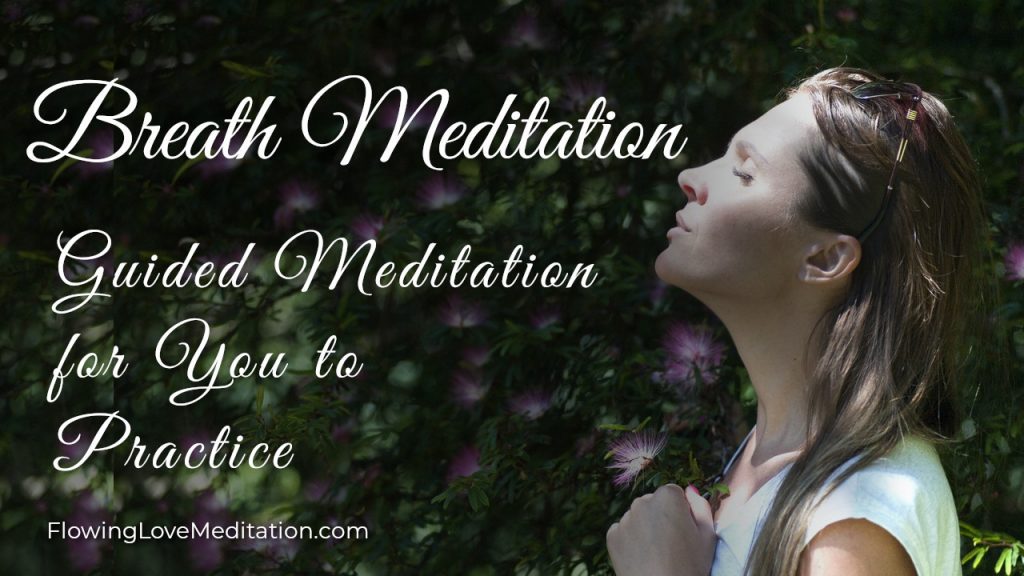
Try Breath Meditation. Practice it to heal your body: Breath Meditation – A Guided Meditation for You to Practice.
E. Crystal Healing:
Crystal healing is an alternative approach that utilizes gemstones and crystals for their purported healing properties. While scientific evidence is limited, some people find crystals helpful for promoting relaxation, focus, and emotional well-being. Here’s a brief overview:
- How Crystals Work: Proponents of crystal healing believe crystals emit subtle vibrations that interact with our energy field, promoting balance and well-being.
- Common Healing Crystals: Some popular crystals include amethyst (known for relaxation and stress relief), clear quartz (believed to amplify healing intentions), and rose quartz (associated with love and emotional healing).
- Using Crystals: Crystals can be incorporated into your self-care routine in various ways. You can hold them during meditation, place them on your body, or simply keep them in your environment.
F. Herbal Remedies:
Herbal medicine is the use of plants for their medicinal properties. It’s important to note that herbs can have powerful effects and should be used with caution. Always consult with a qualified herbalist before using any herbal remedies. Here’s a brief introduction:
1. Common Healing Herbs:
Examples of common healing herbs include chamomile (known for relaxation and sleep support), peppermint (used for digestive issues), and ginger (helpful for nausea and inflammation).
2. Sacred White Sage Smudging:
Burning white sage is a common practice in many cultures for purification and cleansing negative energy. The smoke is believed to create a sacred space, promoting clarity and well-being.
Traditional American Incense, White Sage is a Powerful Space Clearing Tool that can help to Remove Bad and Negative Energies. Click image above and use Promo Code: ‘NEW20’ to get 20% Off Your First Order Now!
3. Preparing and Using Herbal Remedies:
Herbal remedies can be prepared in various ways, such as teas, tinctures, and salves. It’s essential to follow proper dosage instructions and consult a healthcare professional before using any herbs, especially if you have any pre-existing medical conditions or are taking medications.
G. Divine Love Energy:
Divine love energy is a powerful force that can promote healing and a sense of deep connection. Practices for bringing in divine love energy can be a valuable tool for spiritual healing.
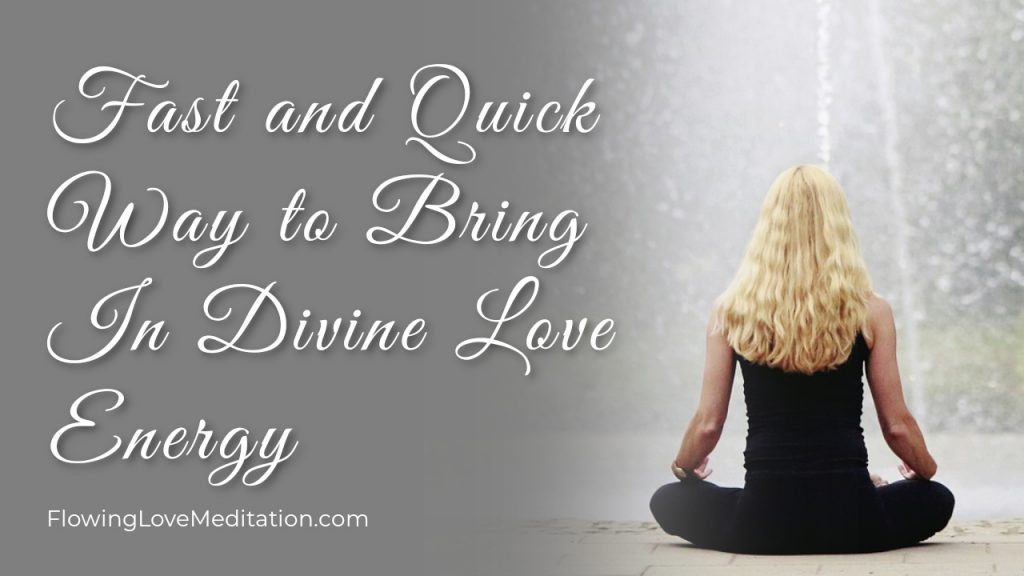
Learn more about practical techniques to cultivate this energy in your life: Fast and Quick Way to Bring In Divine Love Energy.
H. Sound Healing:
Incorporating sound into your healing practice can be transformative. Whether it’s listening to nature sounds, tuning forks, or specific sound frequencies, sound healing can soothe the mind and promote relaxation.

Click image above to get it now!
Unlock inner peace with Ennora’s binaural beats. Backed by research, Ennora’s scientifically crafted music effortlessly aligns mind, body, and spirit. Explore Ennora and embark on a transformative journey today! Click image above to get it now!
1. Tibetan Singing Bowls:
These ancient instruments produce calming vibrations that can induce relaxation and promote deep meditation. The resonant sounds are believed to balance energy centers and create a sense of peace.
I. Distant Healing:
Distant healing is the practice of sending healing energy to someone far away. This practice can be a powerful tool for supporting loved ones or amplifying your own healing efforts.
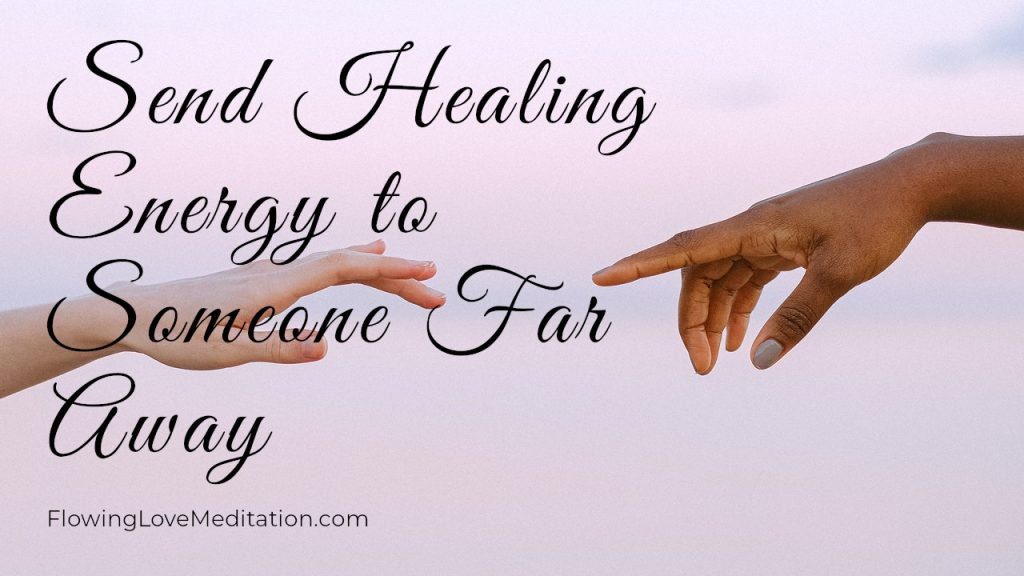
Learn a step-by-step guide on how to practice distant healing: Distant Healing – Send Healing Energy to Someone Far Away.
Remember, these are just a few resources to get you started. Explore different tools and find what resonates most with you on your unique healing journey.
Overcoming Challenges on the Healing Path
The healing journey is rarely smooth sailing. There will be times when you encounter roadblocks and feel discouraged. Here, we’ll explore some common challenges and offer strategies to navigate them, reminding you that you’re not alone on this path.
A. Common Roadblocks:
- Resistance: Change can be uncomfortable, and it’s natural to resist letting go of old patterns or behaviors.
- Fear of the Unknown: Stepping outside your comfort zone can be daunting, and the uncertainty of the healing journey can trigger fear.
- Self-Doubt: Negative self-talk and feelings of inadequacy can hinder progress.
- Setbacks: Healing isn’t always linear. Setbacks are inevitable, but they don’t have to derail your journey.
B. Strategies for Overcoming Challenges:
- Self-Compassion: Be kind to yourself throughout the process. Acknowledge your challenges and celebrate your victories, no matter how small.
- Focus on Progress, Not Perfection: Healing is a journey, not a destination. Focus on the progress you’ve made, rather than striving for unattainable perfection.
- Celebrate Small Wins: Take the time to acknowledge and celebrate your achievements, big or small. This helps stay motivated and reinforces positive change.
- Practice Self-Care: Prioritize activities that nourish your mind, body, and spirit. Self-care helps you cope with challenges and maintain your energy on the healing journey.
- Seek Support: Don’t be afraid to ask for help. Talk to a therapist, join a support group, or confide in a trusted friend or family member.
C. Importance of Support:
Having a support system is crucial for navigating the challenges of healing. Support can come from friends, family, therapists, or support groups. Sharing your journey with others who understand what you’re going through can provide invaluable encouragement and connection.
1. Building a Healing Community:
There are many ways to build a healing community. Here are a few ideas:
- Online Forums: Connect with others online who are on similar healing journeys. Many websites and social media groups offer safe spaces for sharing experiences and finding support.
- Workshops and Retreats: Participating in workshops or retreats can offer a focused environment for learning new healing techniques and connecting with like-minded individuals.
- Support Groups: Support groups provide a safe space to share your experiences, receive encouragement from others, and learn from each other’s journeys. There are support groups available for a wide range of healing needs, so you can find one that caters to your specific situation. Join my healing community: Flowing Love Meditation | Facebook
Remember, healing is a process, and there will be ups and downs along the way. By acknowledging common challenges, developing strategies to overcome them, and seeking support from others, you can navigate your healing journey with greater ease and find the strength and resilience to move forward.
Maintaining Your Healing Journey
Healing is a lifelong journey, not a one-time destination. Just as a well-tended garden requires ongoing care to flourish, maintaining your healing requires consistent effort and self-care. This section explores the importance of integrating healthy habits into your daily life and celebrating your progress along the way.
A. The Importance of Ongoing Self-Care:
Making self-care practices a regular part of your life is crucial for sustained healing and growth. Self-care isn’t about self-indulgence; it’s about taking care of your physical, emotional, and spiritual needs to cultivate a foundation for overall well-being. By prioritizing self-care, you’ll be better equipped to navigate challenges, maintain your progress, and continue to thrive on your healing journey.
1. Integrating Healthy Habits:
Here are some tips for integrating healthy habits into your daily life:
- Schedule Self-Care: Treat self-care activities like important appointments. Block out time in your calendar for meditation, journaling, spending time in nature, or any other practices that nourish you.
- Create a Positive Sleep Routine: Aim for 7-8 hours of quality sleep each night. Develop a relaxing bedtime routine to wind down and prepare your mind and body for sleep.
- Practice Gratitude: Taking time each day to appreciate the good things in your life, big or small, can significantly boost your well-being. Consider keeping a gratitude journal or practicing a short gratitude meditation each morning.
- Maintain a Healthy Diet: Nourish your body with nutritious foods that support your physical and mental health. Focus on consuming plenty of fruits, vegetables, whole grains, and lean protein.
- Move Your Body: Regular physical activity is essential for both physical and mental well-being. Find activities you enjoy, whether it’s dancing, swimming, yoga, or brisk walking.
2. Celebrating Progress and Embracing Growth:
Healing is a journey, not a race. There will be times of rapid progress and plateaus where it feels like you’re not moving forward. It’s important to celebrate all your victories, big or small. Acknowledge how far you’ve come, and remember that even small steps contribute to your overall healing.
Embrace the concept of lifelong growth. Personal growth is a continuous process, and your healing journey is a part of that. Be open to learning new things, expanding your awareness, and evolving as a person. The more you nurture your well-being, the more empowered you become to create a fulfilling and healthy life.
Heal Yourself to Wholeness: Practical Guide for Mind, Body & Spirit
Timotheus Final Thoughts
Flowing Love Meditation
The path to healing is a journey of self-discovery, resilience, and profound transformation. By prioritizing your healing, you’re not just mending past hurts; you’re cultivating a life overflowing with well-being, purpose, and joy.
As Marianne Williamson eloquently stated, “Our deepest fear is not that we are inadequate. Our deepest fear is that we are powerful beyond measure. It is our light, not our darkness, that most frightens us.” Healing empowers you to embrace your inner light, overcome limitations, and step into your full potential.
Invest in Your Well-being:
Your healing journey begins now. Take that first step today:
- Resources:
- Free Guided Meditation: Dive deeper with a guided healing meditation. This can help you heal your mind, body and spirit. Explore and try the many Guided Meditations here at Flowing Love Meditation website.
- Explore More:
- Blog Posts: Delve deeper into specific aspects of healing with our informative blog posts. I cover a wide range of topics related to healing, offering practical tips, insights, and inspiration. As you can see, I have added links to these blog posts on this page. You can also use the search tool on this site to find them. Use the keyword: Heal.
- Share Your Story:
- Community and Inspiration: Have you experienced the healing in your own life? Inspire others by sharing your story in the comments section below! Your success story can motivate and empower others on their own healing journeys.
- Join Our Online Community: Connect with like-minded individuals on our social media channels. Share your experiences, ask questions, and find encouragement and inspiration from others who are also exploring their spirituality.
- YouTube: Explore video tutorials, and inspiring content about healing: Flowing Love Meditation YouTube Channel
- Instagram: Get daily inspiration for your practice: Flowing Love Meditation @ Instagram
- TikTok: Find short, engaging healing tips and practices: Flowing Love Meditation @ TikTok
- X (Formerly Twitter): Stay connected with short, mindful messages: Flowing Love Meditation @ X
- Pinterest: Discover beautiful visuals and infographics related to healing: Flowing Love Meditation @ Pinterest
Join Our Healing Community: Subscribe to our email list to receive ongoing inspiration, support, and valuable resources on your healing path.
Explore Our Healing Resources: Dive deeper into specific healing modalities, guided meditations, and inspiring stories on our website. Check out the main menu at the top of the Flowing Love Meditation website.
Remember, healing is a journey, not a destination. Be patient with yourself, celebrate your progress, and know that you’re not alone. We are here to support you every step of the way. Embrace the transformative power of healing and create a life that lights you up from the inside out.
We hope this comprehensive guide has sparked your enthusiasm for healing. Remember, the most important step is to begin. Take a deep breath, find a quiet space, and embark on your journey towards better health and well-being today.
If you have ANY questions, or anything to clarify, please drop a comment below. I will be happy to help you.
I wish everyone good heath, wealth, and love!

Timotheus
AI & Digital Marketing Expert, Lecturer, Amazon Bestselling Author & Cancer Survivor
Flowing Love Meditation for Inner Peace and Well-Being


